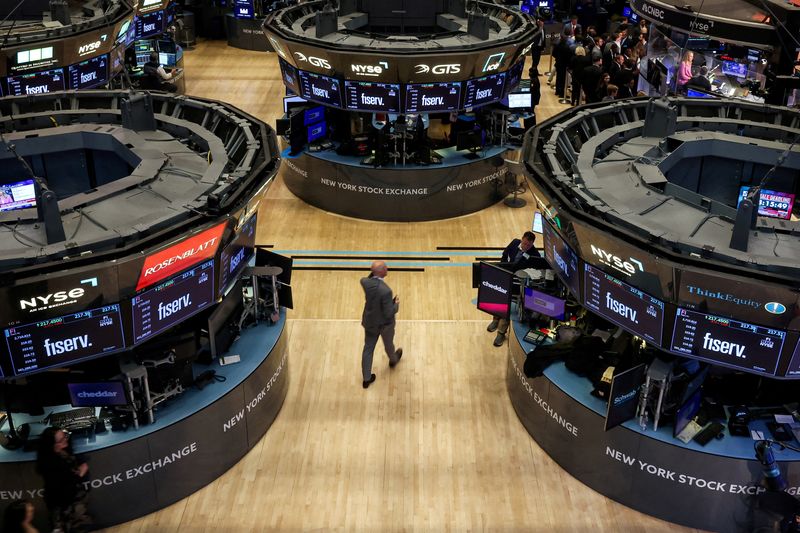
By Caroline Valetkevitch
NEW YORK (Reuters) -Global stock markets extended their recent rout on Friday, with S&P 500 companies wiping out $5 trillion in stock market value since U.S. President Donald Trump unveiled sweeping tariffs on Wednesday, while investors fled to the safety of government bonds.
The Nasdaq confirmed it was in a bear market, ending more than 20% below its record high close, while oil prices and other commodities plunged.
That $5-trillion loss marked a record two-day decline for the S&P 500 benchmark, exceeding a two-day loss of $3.3 trillion in March 2020 when the pandemic ripped across global markets, according to LSEG data compiled by Reuters.
Responding to Trump’s tariffs, China on Friday said it would impose additional levies of 34% on American goods, confirming investor fears that a full-blown global trade war is under way and that the global economy may be at risk of a recession.
Trump slapped a 10% tariff on most U.S. imports and much higher levies on dozens of countries, erecting the steepest trade barriers in more than 100 years.
“It’s sort of the worst fears of where the tariff program was headed,” said Rick Meckler, partner at Cherry Lane Investments, a family investment office in New Vernon, New Jersey.
“For those investors who were sure it was just a negotiation – while that still may be true at some point – it’s getting awfully deeper into the detail and more dangerous for companies.”
The tech-heavy Nasdaq has fallen 22.7% from its December 16 record close as investors fled riskier assets on the tariff worries.
Meanwhile, the Dow Jones Industrial Average and pan-European STOXX 600 index each confirmed they were in a correction.
All three of the major U.S. stock indexes suffered their biggest weekly percentage losses since March 2020, and the Cboe Volatility Index jumped to 45.31, its highest closing level since April 2020.
Companies with exposure to China fell across the board, with Apple dropping 7.3%. The chipmakers index sank 7.6%. Bank and energy shares dropped amid the recession fears.
The Dow Jones Industrial Average fell 2,231.07 points, or 5.50%, to 38,314.86. The index confirmed a correction, finishing more than 10% below its record closing high from December 4.
The S&P 500 fell 322.44 points, or 5.97%, to 5,074.08 and the Nasdaq Composite fell 962.82 points, or 5.82%, to 15,587.79.
The pan-European STOXX index closed 5.1% lower, its biggest daily loss since the COVID-19-fuelled selloff in 2020. The index fell nearly 12% from its March 3 all-time closing high, confirming it was in correction territory.
